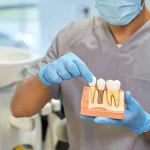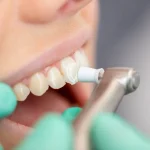“Unlock the complexities of the 60601-1 Standard for Medical Power Supply with our essential guide!🔐💡🏥#MedicalStandard #60601-1Guide
In the realm of medical devices, safety and reliability are paramount. Ensuring these aspects in every piece of equipment is crucial, as any malfunction or failure could have dire consequences. One of the essential components that play a significant role in maintaining the safety and functionality of medical devices is the power supply. Specifically, the 60601-1 power supply standard is a critical guideline that manufacturers must adhere to when designing and producing medical equipment. This article delves into the intricacies of the 60601-1 power supply standard, its importance, and its impact on the medical device industry.
The 60601-1 Standard: An Overview
The 60601-1 standard is part of the broader IEC 60601 series, which is an international set of standards for the safety and performance of medical electrical equipment. The IEC (International Electrotechnical Commission) is responsible for developing these standards, which are recognized and adopted globally. The primary objective of the 60601-1 standard is to ensure that medical devices are safe for both patients and operators by regulating various aspects of electrical and mechanical design.
One of the most crucial components regulated under this standard is the power supply. A power supply in a medical device is not just a means to convert and deliver electrical energy but also a critical component that must meet stringent safety requirements. The 60601-1 standard outlines specific criteria for the design, testing, and performance of power supplies used in medical devices to ensure they operate safely under various conditions.
Key Requirements of the 60601-1 Power Supply Standard
The 60601-1 standard encompasses several key requirements that manufacturers must consider when designing power supplies for medical devices Birthday Gifts. These requirements are aimed at ensuring electrical safety, reducing electromagnetic interference (EMI), and enhancing overall device reliability.
-
Electrical Isolation
One of the primary concerns in medical devices is the prevention of electrical shock to patients and operators. The 60601-1 standard mandates stringent isolation requirements between the mains input and the output of the power supply. This isolation is crucial because it ensures that any fault in the power supply does not result in dangerous voltages being transferred to the patient or operator. The standard specifies various levels of isolation, depending on the type of medical device and its intended use.
-
Leakage Current Limits
Leakage current refers to the unintended flow of current through the patient’s body or the device chassis. Even a small amount of leakage current can be harmful, particularly in devices that are directly connected to the patient. The 60601-1 standard sets strict limits on the allowable leakage current for different types of medical devices. These limits are designed to minimize the risk of electric shock and ensure patient safety.
-
Electromagnetic Compatibility (EMC)
Medical devices often operate in environments with various electronic equipment, which can generate electromagnetic interference (EMI). The 60601-1 standard includes requirements for electromagnetic compatibility (EMC) to ensure that medical devices do not interfere with other equipment and are not susceptible to interference themselves. Power supplies must be designed to minimize EMI emissions and be resilient against external electromagnetic disturbances.
-
Thermal Management
Excessive heat generation in power supplies can lead to component failure and, in extreme cases, pose a fire hazard. The 60601-1 standard emphasizes the importance of thermal management in power supply design. Manufacturers must ensure that their power supplies operate within safe temperature limits and that adequate cooling mechanisms are in place. This may involve the use of heat sinks, fans, or other cooling methods to dissipate heat effectively.

-
Reliability and Durability
Given the critical nature of medical devices, the power supplies used in these devices must be highly reliable and durable. The 60601-1 standard requires rigorous testing of power supplies to ensure they can withstand the demanding conditions of medical environments. This includes tests for voltage stability, overload protection, and longevity under continuous operation.
The Impact of the 60601-1 Standard on Medical Device Manufacturing
The 60601-1 power supply standard has a profound impact on the design and manufacturing of medical devices. Compliance with this standard is not just a regulatory requirement; it is a testament to the manufacturer’s commitment to safety and quality. As such, the standard influences several aspects of the medical device development process.
-
Design Considerations
Manufacturers must incorporate the 60601-1 requirements from the earliest stages of design. This involves selecting appropriate components, such as transformers, capacitors, and isolation barriers, that meet the standard’s criteria. The design process also includes careful consideration of the physical layout of the power supply to ensure proper isolation and minimize the risk of electrical faults.
-
Testing and Certification
Compliance with the 60601-1 standard requires thorough testing and certification by recognized testing bodies. These tests are designed to verify that the power supply meets all the specified safety requirements, including electrical isolation, leakage current limits, and EMC performance. Certification is a rigorous process, often involving multiple rounds of testing and refinement.
-
Quality Assurance
The 60601-1 standard also necessitates robust quality assurance processes. Manufacturers must implement stringent quality control measures to ensure that every power supply produced meets the required standards. This includes regular inspections, testing of components, and continuous monitoring of production processes.
-
Market Access
Compliance with the 60601-1 power supply standard is often a prerequisite for gaining access to global markets. Medical devices that do not meet this standard may be restricted or banned from sale in certain regions. As a result, adherence to the standard is critical for manufacturers looking to distribute their products internationally.
Challenges in Implementing the 60601-1 Standard
While the 60601-1 standard is essential for ensuring the safety and reliability of medical devices, it also presents several challenges for manufacturers. One of the primary challenges is the complexity of the standard itself. The requirements are detailed and multifaceted, covering various aspects of power supply design and performance. This complexity can make compliance a time-consuming and costly process.
Another challenge is the constant evolution of the standard. As technology advances and new risks emerge, the IEC periodically updates the 60601-1 standard to reflect the latest best practices. Manufacturers must stay abreast of these changes and be prepared to adapt their designs and processes accordingly.
Conclusion
The 60601-1 power supply standard is a cornerstone of medical device safety and reliability. By setting stringent requirements for electrical isolation, leakage current, EMC, thermal management, and durability, the standard ensures that medical devices operate safely and effectively in demanding environments. For manufacturers, compliance with the 60601-1 standard is not just a regulatory obligation but a critical aspect of producing high-quality medical equipment. Despite the challenges, adherence to this standard is essential for ensuring patient safety, gaining market access, and maintaining a competitive edge in the medical device industry.







